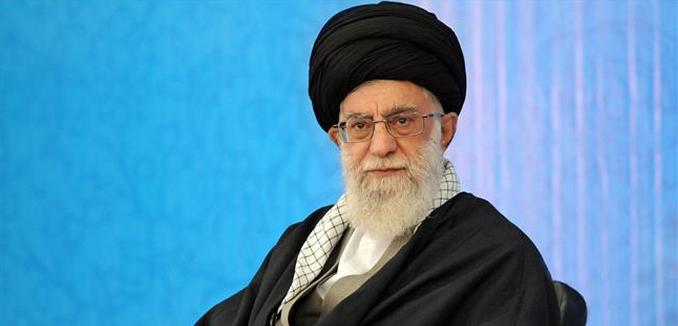In the wake of the anti-government protests in Iran, the United States government could show its support for the protesters by targeting the vast financial empire controlled by Supreme Leader Ayatollah Ali Khamenei, Mark Dubowitz and Saeed Ghasseminejad argued in an op-ed published Tuesday in The Wall Street Journal.
Dubowitz, the CEO of Foundation for Defense of Democracies (FDD), and Ghasseminejad, a researcher there, wrote that President Donald Trump could target Khamenei and the foundations he controls under provisions of the Global Magnitsky Human Rights Accountability Act, which allows the president to target individuals involved in corruption and human rights abuses.
Khamenei controls an empire that is worth an estimated $200 billion and has “an interest in nearly every Iranian industry.” The three main organizations in the Supreme Leader’s empire are Execution of Imam Khomeini’s Order, or EIKO ; the Mostazafan Foundation; and the Astan Quds Razavi. All three have built up their value by through the “systematic confiscation of private property.”
According to a 2013 investigation by Reuters, EIKO, is worth about $95 billion. EIKO consists mostly of real-estate holdings and has “dozens of subsidiaries and front companies” so it is difficult to assess the full extent of its impact on Iran’s economy.
The Mostazafan Foundation was established by Khamenei’s predecessor and founder of the Islamic Republic, Ayatollah Ruhollah Khomeini, to “seize and manage assets owned by the deposed royal family and its associates.” The foundation is believed to control hundreds of companies and its assets are valued at about $16 billion, though that number is likely an underestimate.
The Astan Quds Razavi exercises strict control over three of Iran’s southern provinces, where it manages valuable agricultural and energy businesses. According to BBC Persian, Astan’s real-estate assets are valued at $20 billion, including nearly half the land in the province of Mashad, where the economic unrest started.
Ibrahim Raisi, a cleric with a record of human rights abuses, who was tapped in September 2016 by Khamenei to run Astan, is thought to be a leading candidate to succeed the Supreme Leader.
Consistent with predictions of numerous experts, businesses controlled by the state, including those ultimately controlled by Khamenei, “were the biggest beneficiaries of the nuclear accord.” Since the nuclear deal was agreed to in July 2015, Dubowitz and Ghasseminejad wrote, “nearly 110 business and investment deals have been signed with Iranian companies. According to Reuters, 90 of those entities are owned or controlled by the state.”
Although the United States Treasury Department leveled sanctions against EIKO and 37 subsidiaries in 2013, those sanctions were lifted in the wake of the nuclear deal, even though the sanctions were not at all related to Iran’s nuclear program.
While the reporting of these companies isn’t transparent, enough is known about them for the U.S. government to target them. FDD has identified 146 companies controlled by Khamenei and 144 top-ranking officials in these companies. The Trump administration knows enough of the players to “isolate the Khamenei business empire, freeze its assets, and penalize international companies that enrich the Iranian regime,” using the authority of the Global Magnitsky Human Rights Accountability Act.
“With President Trump and the Iranian protesters on the same side against the supreme leader and his criminal regime,” Dubowitz and Ghasseminejad concluded, “now is the time to strike.”
[Photo: PressTV]




